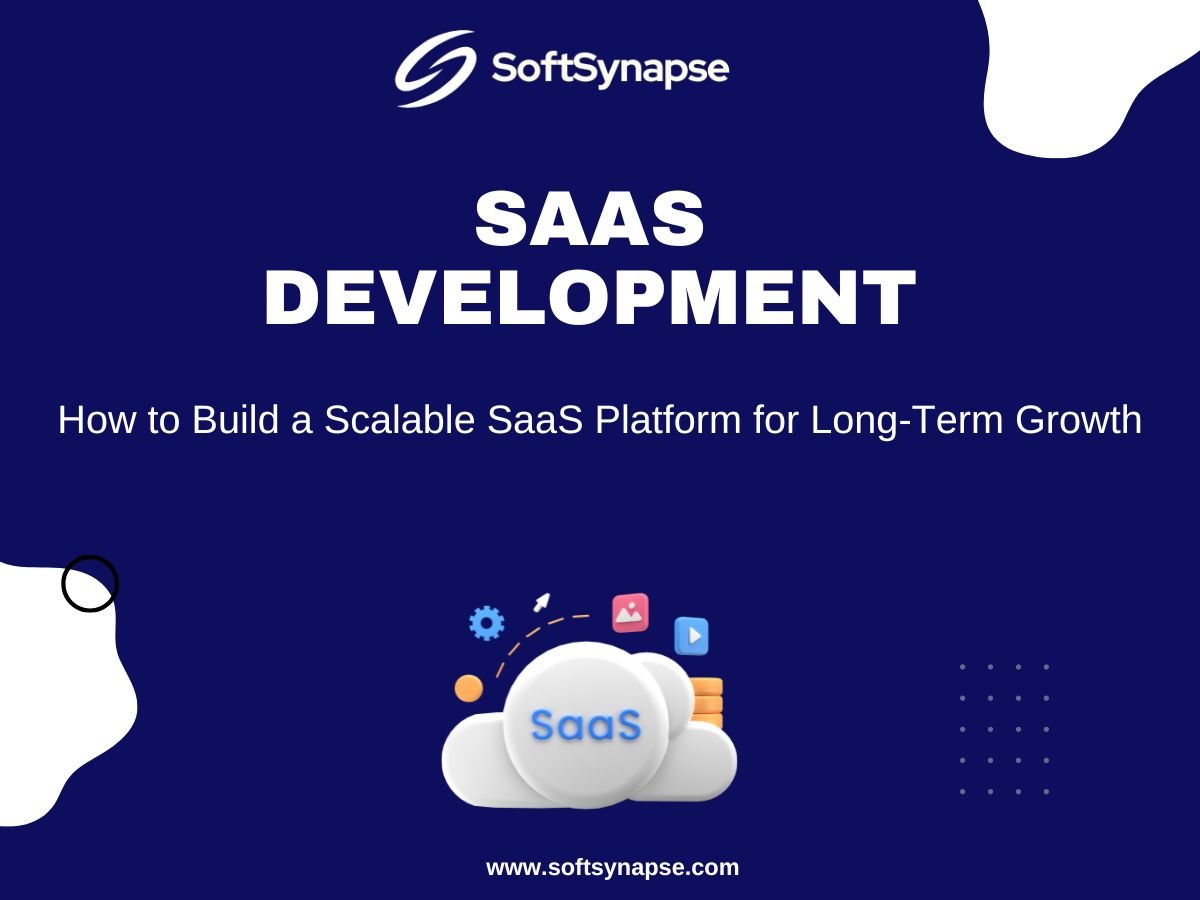
Learn how to build a scalable SaaS platform for long-term growth. Discover trusted, affordable, and reliable development strategies from top-rated experts.
The demand for SaaS development is rapidly growing, with businesses seeking reliable and affordable solutions that can scale efficiently. Creating a scalable SaaS platform requires strategic planning, cutting-edge technology, and an experienced team of developers. Whether you’re a startup or an enterprise, understanding how to build a dependable and top-rated SaaS solution is crucial for long-term success.
This guide will walk you through the key steps in building a trustworthy, professional, and cost-effective SaaS platform. We’ll also explore strategies for ensuring your platform remains affordable yet premier, positioning your business for sustained growth.
Why Scalability is Important in SaaS Development
A scalable SaaS platform allows businesses to accommodate increasing users, workloads, and features without performance issues. Here’s why scalability is crucial:
Handles Growing User Demands: A dependable SaaS platform can support a rising customer base without downtime.
Optimizes Costs: Building an affordable and scalable system ensures cost-efficiency over time.
Enhances Reliability: A trusted infrastructure prevents crashes and enhances the user experience.
Future-Proofing: Enables seamless upgrades and feature expansions.
Key Steps to Building a Scalable SaaS Platform
Define a Clear Business Model
Before starting SaaS development, outline your business objectives:
Subscription Model: Monthly or yearly payments.
Freemium Model: Free basic features with paid premium upgrades.
Usage-Based Pricing: Customers pay for what they use.
Enterprise Licensing: Large-scale deployments for businesses.
A top-rated SaaS platform aligns its pricing with market demand while remaining affordable for customers.
Choose a Scalable Technology Stack
Selecting the right technology stack ensures long-term efficiency and dependability. Consider:
Frontend: React, Angular, Vue.js for responsive UI.
Backend: Node.js, Python, Ruby on Rails for high performance.
Database: PostgreSQL, MongoDB for reliable data management.
Cloud Services: AWS, Google Cloud, or Azure for seamless scaling.
A top expert development team ensures your technology is trustworthy and optimized for performance.
Implement a Microservices Architecture
A microservices approach divides the application into smaller, independent services, improving scalability and reliability.
Enhances Flexibility: Each service can be scaled independently.
Improves Fault Tolerance: Failures in one module don’t affect the entire system.
Facilitates Faster Updates: Enables continuous deployment.
Focus on Security and Compliance
A trusted and top reliable SaaS platform prioritizes data security. Implement:
Encryption: Secure user data with SSL/TLS protocols.
Authentication: Use OAuth, SAML, or JWT for user access.
Compliance: Follow industry regulations like GDPR, HIPAA.
Optimize Performance and Load Balancing
To ensure a dependable platform, focus on:
CDN Integration: Reduces load times and enhances global accessibility.
Auto-Scaling: Adjusts resources based on traffic demands.
Load Balancers: Distributes traffic efficiently.
Develop an API-First Approach
Building a strong API ensures reliable integrations with third-party applications and future scalability. Benefits include:
Seamless Third-Party Integrations: Connect with CRMs, payment gateways, analytics tools.
Mobile & Web Compatibility: Develop mobile-friendly applications.
Extensibility: Allows future feature additions without overhauling the system.
Implement a Strong DevOps Strategy
DevOps practices enhance efficiency and ensure a top-rated deployment process.
CI/CD Pipelines: Automate testing and deployment.
Monitoring Tools: Use Datadog, Prometheus for real-time insights.
Containerization: Docker & Kubernetes for easy scaling.
Ensure Cost-Effective Growth
To maintain an affordable SaaS platform, optimize operational costs by:
Choosing the Cheapest Yet Reliable Cloud Providers: Compare AWS, Azure, and Google Cloud.
Adopting Serverless Architectures: Reduce infrastructure costs.
Utilizing Open-Source Solutions: Minimize licensing expenses.
Common Challenges in Scaling a SaaS Platform
Even with a trusted approach, challenges may arise:
Data Bottlenecks: Use optimized databases for smooth performance.
High Infrastructure Costs: Implement affordable cloud solutions.
Security Vulnerabilities: Regular audits ensure dependability.
Customer Retention: Prioritize user experience to reduce churn.
Conclusion
Building a scalable SaaS platform requires meticulous planning, the right technology, and a focus on trusted and professional development practices. By following these steps, you can ensure a reliable, affordable, and premier platform that supports long-term growth.
Whether you’re looking for the cheapest entry point or a top expert solution, the key lies in a dependable architecture, experienced development, and continuous optimization. Investing in top-rated best practices will position your SaaS for success in an increasingly competitive market.
FAQs
Q1: How much does it cost to build a scalable SaaS platform?
A: Costs vary, but a basic SaaS solution starts at $10,000, while top expert solutions can exceed $100,000.
Q2: What are the best cloud platforms for SaaS development?
A: AWS, Google Cloud, and Azure are the most reliable choices, offering dependable scalability options.
Q3: How do I ensure my SaaS platform remains affordable?
A: Use cheapest cloud options, open-source tools, and trustworthy automation strategies to control costs.
Q4: What programming languages are best for SaaS development?
A: Experienced developers often use Python, Node.js, Ruby on Rails, or Java for building professional SaaS solutions.
Q5: How long does it take to develop a scalable SaaS platform?
A: Timelines range from 3 months for a basic MVP to 12+ months for a fully top-rated enterprise solution.
